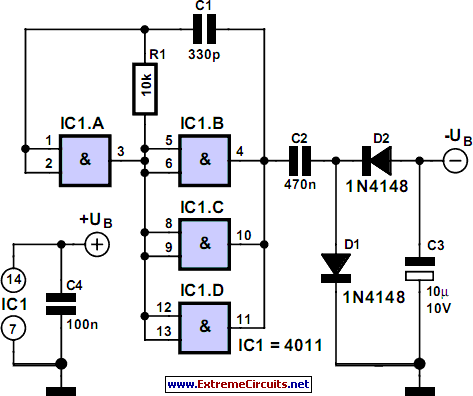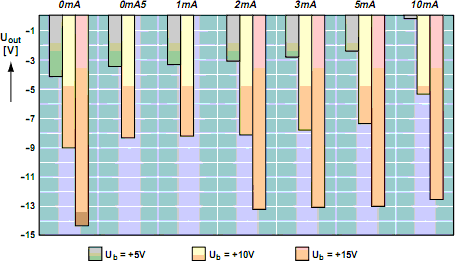Home » Circuits
Negative Auxiliary Voltage
Some circuits need a negative supply voltage that only has to supply a small current. Providing a separate transformer winding for this (possibly even with a rectifier and filter capacitor) would be a rather extravagant solution. It can also be done using a few gates and several passive components. The combination of gate IC1a and the other three gates (wired in parallel) forms a square-wave generator. D1 and D2 convert the ac voltage into a dc voltage. As a CMOS IC is used here, the load on the negative output is limited to a few milliampères, depending on the positive supply voltage (see chart), despite the fact that three gates are connected in parallel.Circuit diagram:
However, as the figure shows, the negative voltage has almost the same magnitude as the positive input voltage, but with the opposite sign. If a clock signal in the range of 10–50 kHz is available, it can be connected to the input of IC1a, and R1 and C1 can then be omitted.
Author: Ludwig Libertin - Copyright: Elektor Electronics


